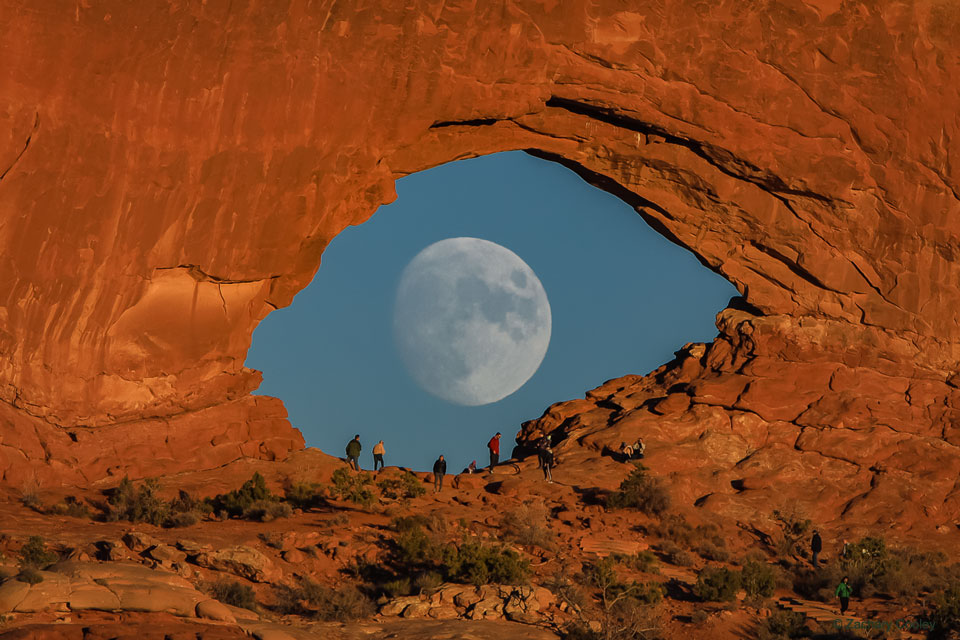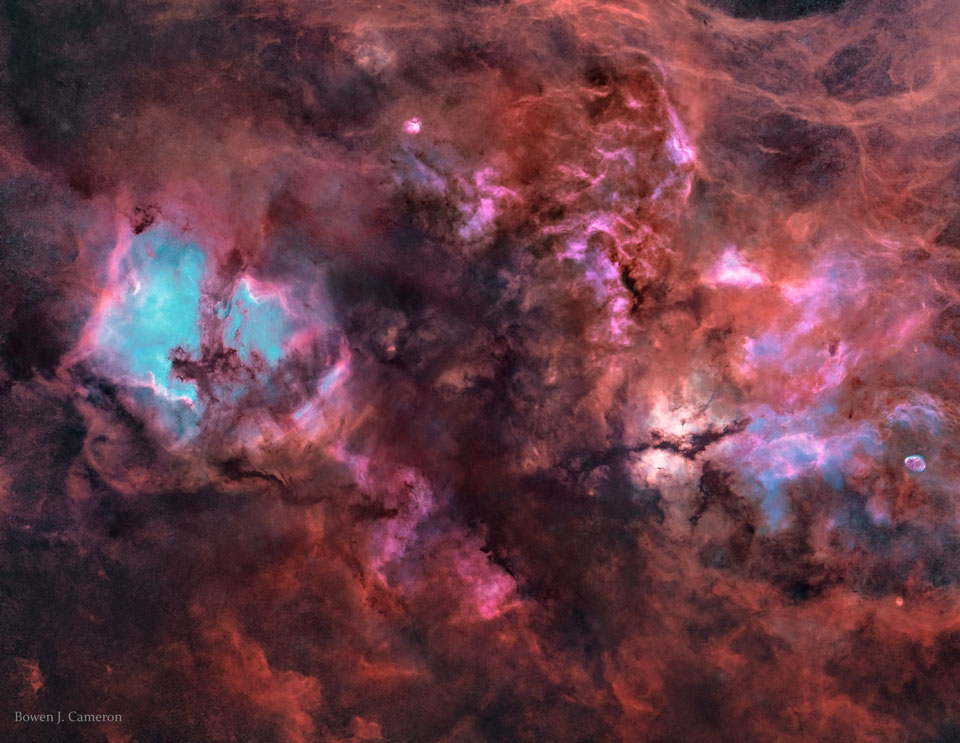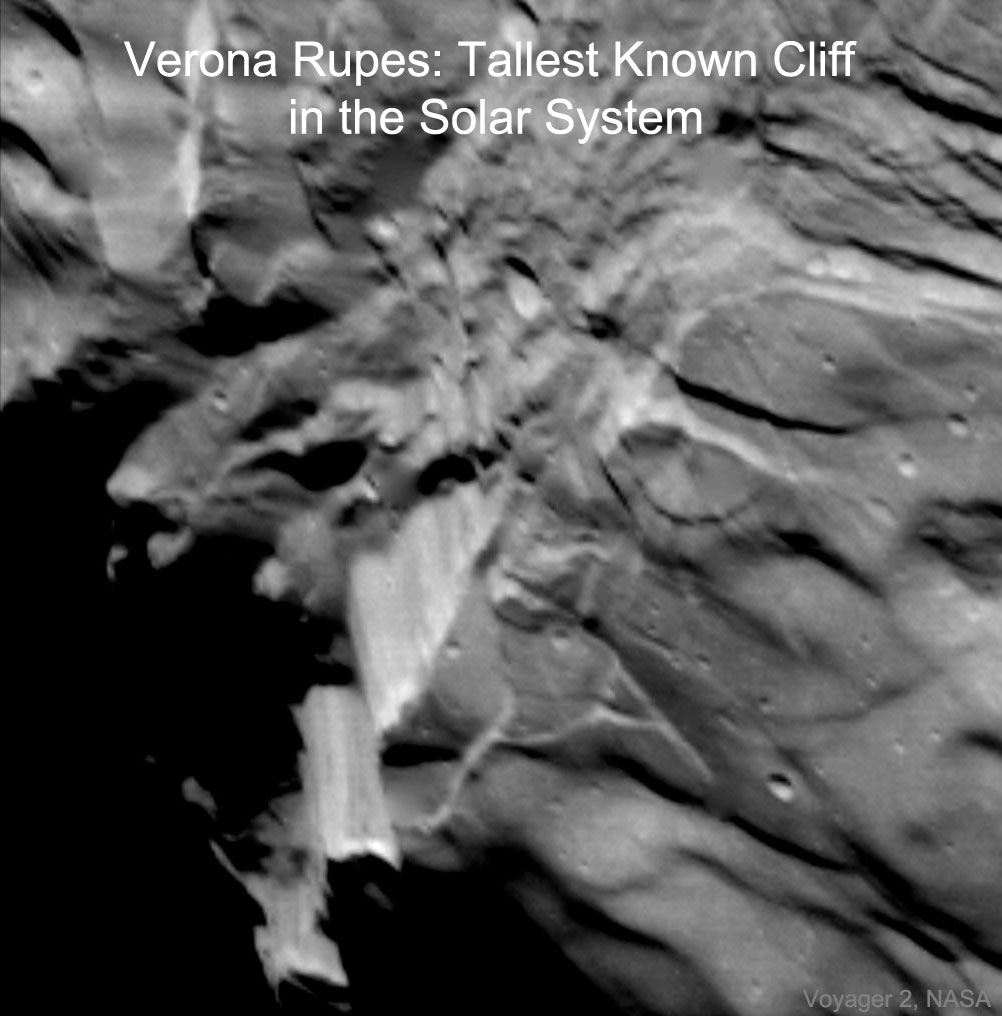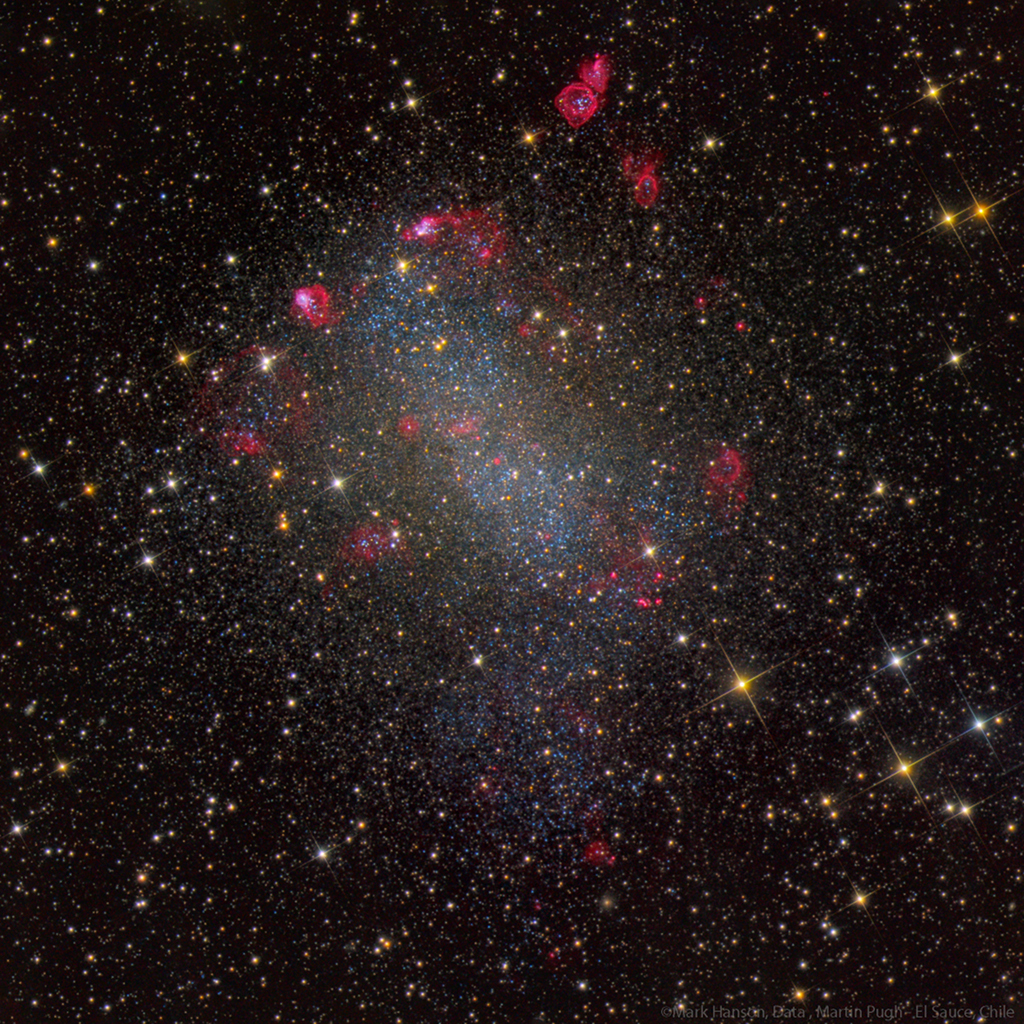Nombre total de pages vues
02/12/2020
AERONAUTIQUE - La Mongolfière familiale
ASTRONOMY - Eye of moon
2020 December 2
Image Credit & Copyright: Zachery Cooley
Explanation: Who's watching who? The featured image of the Moon through a gap in a wall of rock may appear like a giant eye looking back at you. Although, in late October, it took only a single exposure to capture this visual double, it also took a lot of planning. The photographic goal was achieved by precise timing -- needed for a nearly full moon to appear through the eye-shaped arch, by precise locating -- needed for the angular size of the Moon to fit iconically inside the rock arch, and by good luck -- needed for a clear sky and for the entire scheme to work. The seemingly coincidental juxtaposition was actually engineered with the help of three smartphone apps. The pictured sandstone arch, carved by erosion, is millions of years old and just one of thousands of natural rock arches that have been found in Arches National Park near Moab, Utah, US
01/12/2020
ASTRONOMY - NGC 346: Star Forming Cluster in the SMC
2020 December 1
Image Credit & License: NASA, ESA, Hubble; Processing: Judy Schmidt
Explanation: Are stars still forming in the Milky Way's satellite galaxies? Found among the Small Magellanic Cloud's (SMC's) clusters and nebulas, NGC 346 is a star forming region about 200 light-years across, pictured here in the center of a Hubble Space Telescope image. A satellite galaxy of the Milky Way, the Small Magellanic Cloud (SMC) is a wonder of the southern sky, a mere 210,000 light-years distant in the constellation of the Toucan (Tucana). Exploring NGC 346, astronomers have identified a population of embryonic stars strung along the dark, intersecting dust lanes visible here on the right. Still collapsing within their natal clouds, the stellar infants' light is reddened by the intervening dust. Toward the top of the frame is another star cluster with intrinsically older and redder stars. A small, irregular galaxy, the SMC itself represents a type of galaxy more common in the early Universe. These small galaxies, though, are thought to be building blocks for the larger galaxies present today.
30/11/2020
ASTRONOMY - Cygnus Without Stars
2020 November 30
Image Credit & Copyright: Bowen James Cameron
Explanation: The sky is filled with faintly glowing gas, though it can take a sensitive camera and telescope to see it. For example, this twelve-degree-wide view of the northern part of the constellation Cygnus reveals a complex array of cosmic clouds of gas along the plane of our Milky Way galaxy. The featured mosaic of telescopic images was recorded through two filters: an H-alpha filter that transmits only visible red light from glowing hydrogen atoms, and a blue filter that transmits primarily light emitted by the slight amount of energized oxygen. Therefore, in this 18-hour exposure image, blue areas are hotter than red. Further digital processing has removed the myriad of point-like Milky Way stars from the scene. Recognizable bright nebulas include NGC 7000 (North America Nebula), and IC 5070 (Pelican Nebula) on the left with IC 1318 (Butterfly Nebula) and NGC 6888 (Crescent Nebula) on the right -- but others can be found throughout the wide field.
29/11/2020
Astronomy - Verona Rupes: Tallest Known Cliff in the Solar System
2020 November 29
Image Credit: Voyager 2, NASA
Explanation: Could you survive a jump off the tallest cliff in the Solar System? Quite possibly. Verona Rupes on Uranus' moon Miranda is estimated to be 20 kilometers deep -- ten times the depth of the Earth's Grand Canyon. Given Miranda's low gravity, it would take about 12 minutes for a thrill-seeking adventurer to fall from the top, reaching the bottom at the speed of a racecar -- about 200 kilometers per hour. Even so, the fall might be survivable given proper airbag protection. The featured image of Verona Rupes was captured by the passing Voyager 2 robotic spacecraft in 1986. How the giant cliff was created remains unknown, but is possibly related to a large impact or tectonic surface motion.
28/11/2020
Astronomy - NGC 6822: Barnard's Galaxy
2020 November 28
Image Credit & Copyright: Data - Martin Pugh, Processing - Mark Hanson
Explanation: Grand spiral galaxies often seem to get all the glory, flaunting their young, bright, blue star clusters in beautiful, symmetric spiral arms. But small galaxies form stars too, like nearby NGC 6822, also known as Barnard's Galaxy. Beyond the rich starfields in the constellation Sagittarius, NGC 6822 is a mere 1.5 million light-years away, a member of our Local Group of galaxies. A dwarf irregular galaxy similar to the Small Magellanic Cloud, NGC 6822 is about 7,000 light-years across. Brighter foreground stars in our Milky Way have a spiky appearance. Behind them, Barnard's Galaxy is seen to be filled with young blue stars and mottled with the telltale pinkish hydrogen glow of star forming regions in this deep color composite image.
27/11/2020
Astronomy - Chang'e 5 Mission Launch
2020 November 27
Image Credit & Copyright: Jeff Dai (TWAN)
Explanation: This Long March-5 rocket blasted off from the Wenchang launch site in southernmost Hainan province on Tuesday November 24, at 4:30 am Beijing Time, carrying China's Chang'e-5 mission to the Moon. The lunar landing mission is named for the ancient Chinese goddess of the moon. Its goal is to collect about 2 kilograms (4.4 pounds) of lunar material from the surface and return it to planet Earth, the first robotic sample return mission to the Moon since the Soviet Union's Luna 24 mission in 1976. The complex Chang'e-5 mission landing target is in the Oceanus Procellarum (Ocean of Storms). The smooth volcanic plain was also visited by the Apollo 12 mission in 1969. Chang'e-5's lander is solar-powered and scheduled to operate on the lunar surface during its location's lunar daylight, which will last about two Earth weeks, beginning around November 27. A capsule with the lunar sample on board would return to Earth in mid-December.
ASTRONOMY - A Solstice Sun Tattoo
025 December 20 A Solstice Sun Tattoo Image Credit & Copyright : Marcella Pace Explanation: The word solstice is from the Latin fo...

-
2022 September 26 All the Water on Planet Earth Illustration Credit: Jack Cook, Adam Nieman, Woods Hole Oceanographic Institution ; Data ...
-
2025 May 11 The Surface of Venus from Venera 14 Image Credit: Soviet Planetary Exploration Program , Venera 14 ; Processing & Copyri...









